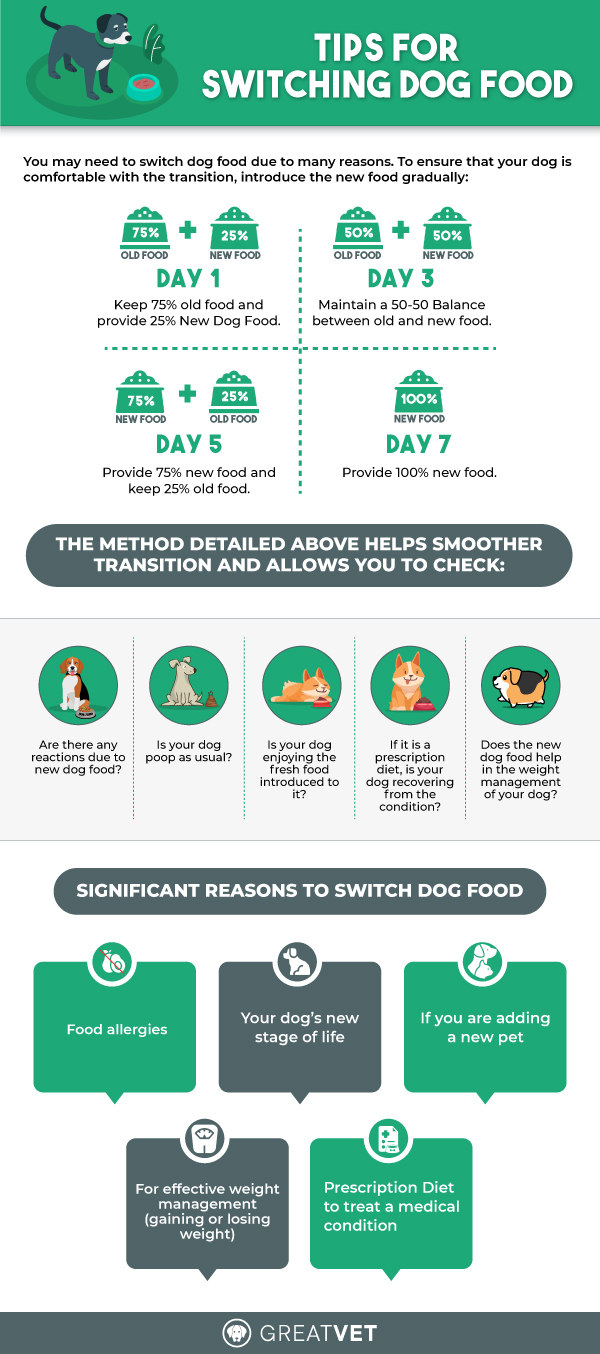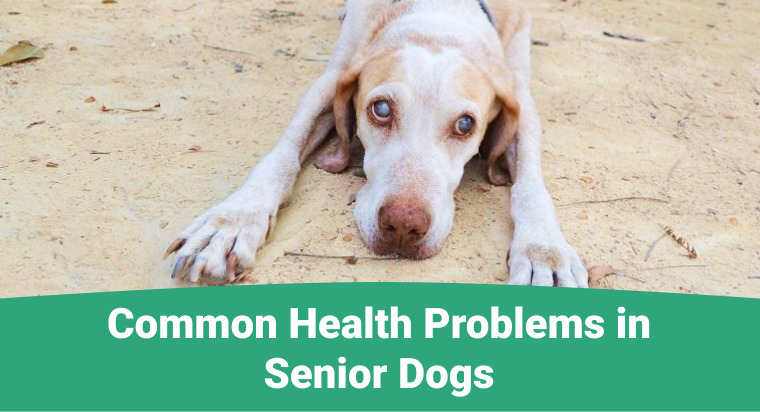Are you considering switching brands or types of dog food? Or does your pet suffer from a food allergy?
Whatever the cause for the switch in dog food, you must do so gradually to enable your puppy’s stomach to acclimate to the new diet.
Some pets adopt the more effortless food transition process, while others tend to be more finicky. As a concerned pet parent, you should closely observe your pet during the transition phase. To ensure that it is getting the required nutrition, consulting a pet nutritionist before changing the diet is an intelligent step.
If your pet may start vomiting during change or suffer from constipation or diarrhea, consult a vet to avoid such an occurrence.
We have enlisted a few reasons you should consider a diet change in your pet. Also, I have explained some of the additional information about the good food. You can also glance at infographics added to the blog for a better understanding. Let’s scroll through.

Reasons To Change Dog Food
Other than cost, there are various reasons why you might want to switch your dog’s food. Following are a rundown of some of the major reasons we should think about:
Food Intolerance
A food sensitivity might cause your dog’s upset stomach or itchy skin. Even if a dog has been eating the same item for years, it may develop an allergic reaction to it. If you think your pet has a certain food sensitivity, talk to your veterinarian about switching to a different diet.
Life Stage
When your puppy reaches the age of 12 months (depending on size), his nutritional needs shift. It’s now time to switch to adult dog food. Puppies of smaller breeds should be able to make the transition sooner than those of larger types.
Changing your dog’s diet too quickly might result in gastrointestinal problems, including vomiting, diarrhea, and a loss of appetite. When you choose to switch your dog’s food, you should do it gradually to allow your dog’s system to acclimatize to the change. These adjustments should ideally take 5-7 days. Mixing the present dog food with the new dog food for at least five days is the ideal approach to transfer your dog’s food. You’ll progressively add more and more of the fresh food into your dog’s current diet during this transition.
A decent diet transition for most dogs will look like this:
Day 1: Initiate the adjustment phase for clean digestion by feeding 75 percent of your existing (old) diet and mixing with 25% of the new food in each and every meal.
Day 2: Switch to feeding 60% of your old food and 40% of your food product in each dish.
Day 3: Feed your pet 50 percent of your old food every serving and 50 percent of the new food.
Day 4: Feed your canine 40 percent of your old food every serving and 60 percent of the new food.
Day 5: Combine 25% of your old food with 75% of your new food for each dish.
Day 6: Feed 90-100 percent of the new food – you should be nearing the end of your digestive transitional phase.
Divide the daily portion size into two meals, one in the morning and the other in the evening. Canines with sensitive stomachs, food allergies, or other gastrointestinal problems may need an elongated transition time. The basic to a successful diet shift is to pay attention to your dog’s specific reaction. You should be particularly cautious if your dog displays any warning signs during the diet transition, for example, changes in appetite, vomiting, or diarrhea. If your dog’s stomach trouble persists after the transition period, it’s advisable to seek advice from your veterinarian. Sometimes it may be essential to switch to a new diet in some circumstances.
What Should a Dog Owner Look for in a Dog Food?
It’s challenging to choose the correct nourishment for your dog. The sheer number of different dog food options is mind-boggling. Unfortunately, no one “ideal” diet exists for every dog. Dogs, like people, are unique, and their food requirements vary based on age, health, and personal preferences.
Several dog food misconceptions are floating around the internet to make matters even more confusing. Many pet parents fall victim to advertising campaigns or scare tactics relating to hovering over the myths of commercial dog foods. But in-depth health, consultation with a vet, and reading the guides written by the World Small Animal Veterinary Association, such as “The Savvy Dog Owner’s Guide’, helps to aid pet owners in separating fact from fiction while conducting their dog food research.
Nowadays, diverse types of foods are available. Such as dry, wet, moist, semi-moist, fresh, and raw, but when you choose nutrition for your pet, focus on opting for a complete and balanced diet. Your pet food should contain the apt quality of protein, carbohydrates, fats, minerals, and vitamins are extremely important for your pet’s overall health and well-being.
Learning to read a pet food label may also assist in the demystification of the dog food selection process. Association of American Feed Control Officials monitors and regulates the content on pet food labels (AAFCO). AAFCO is in charge of defining a lot of the terminology on dog food bags. It’s easy to determine which goods are ideal for your dog if you understand the labeling standards. On the label, look for the phrase “complete and balanced diet.”
The Takeaway
Finding the perfect food for your dog may be time-consuming, but a vet can ensure a smooth transfer and a gradual shift. Vet directories like GreatVet can be your faithful companion if you consider finding a vet online. The platform allows you to find a specialized vet in your local area; you can search for the pet care clinic based on your zip code, metro, country, and neighborhood. In the entire transition, keep an eye on your dog’s appetite, temperament, and stool quality to see if the new diet fits him. Your veterinarian, as always, is the most acceptable source of information about your dog’s health and diet.
Disclaimer: The content on the site is for educational purposes only, and it does not provide medical advice. The shared information must not be treated as a substitute for or alternative for medical practitioner advice, diagnosis, or treatment. Regarding any concerns about your pet’s health, seeking veterinary guidance is of utmost necessity. Each pet has specific health, fitness & nutrition needs. Do not disregard, avoid or delay pet health-related advice from veterinarians based on reading the information provided on this site.



